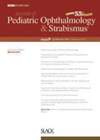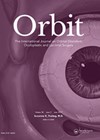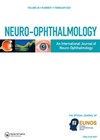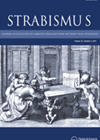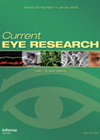
Journal Reviews archive for October 2023
Choroid changes in amblyopic, fellow and control eyes
In this study the authors aimed to evaluate choroidal changes in the hyperopic anisometropic eyes of children by comparing amblyopic and fellow eyes, and control eyes, using a binarization method – analysis of enhanced depth imaging with OCT (EDI-OCT) using...
Normative dimensions of the lacrimal gland
This article looks at the normative dimensions of the lacrimal gland in the axial and coronal plane on fat-suppressed T1 weighted contrast-enhanced magnetic resonance imaging (MRI). Previous data on this subject has come from computed tomography (CT). MRI is known...
Case reports of neuro-visual consequences of mild COVID-19 in children
Neuro-visual involvement has been reported in numerous patients with severe SARS-CoV-2 disease, mainly among adult patients. In children, such involvement has been reported in rare cases, often in those presenting with severe forms of COVID-19. The aim of this work...
Using a tumour registry to investigate optic nerve gliomas
This study is a retrospective comparative analysis. Patients with optic nerve glioma and pilocytic astrocytoma were identified through the Surveillance, Epidemiology and End Results (SEER) cancer registry covering a 42-year period using standardised codes. The following data was extracted: basic...
Tutopatch® in surgical management of third nerve palsy
his study evaluates the benefit of using Tutopatch® to elongate the extraocular muscles in patients with third nerve palsy who have residual strabismus after unsuccessful surgery and no other surgical options considered to be appropriate. The study included nine patients...
Bromfenac versus betamethasone in diabetic macular oedema
This is a randomised, prospective, single-centre trial in patients diagnosed with diabetic macular oedema (DMO) with central subfield thickness (CST) of 250-500µm, who refused anti-VEGF treatment. Nineteen eyes of 19 patients were randomised to bromfenac (BF) or betamethasone (BM) drops,...
Resection versus plication impact on conjunctival-scleral thickness
In this study the authors aimed to compare the conjunctival-scleral thickness as measured with anterior segment (AS) OCT before and after medial rectus muscle resection or plication for exotropia. This was a prospective study of 7 resection cases and nine...
Home testing versus in-person visual acuity test results
This retrospective review compared visual acuity findings by parents / carers during telehealth consultations compared with their subsequent in-person tests. Parents were given an information pack with testing instructions for home tests. The study included 43 patients (86 eyes) with...
Features of idiopathic versus non-idiopathic ocular motor apraxia
The aim of this study was to describe the characteristics and outcomes of ocular motor apraxia (OMA) in a paediatric neuro-ophthalmology clinic over 10 years. This was a retrospective case review and included 37 patients of which 46% were idiopathic...
Presentation features of ocular neuromyotonia in children
The authors report five cases of ocular neuromyotonia (ON) in children following radiation treatment for brain tumours. Children were aged four, nine, twelve, five and nine years. Three had craniopharyngioma, one had fourth ventricle ependymoma and one had posterior fossa...
Leber’s hereditary optic neuropathy outcomes in an Indian population
A large cohort study in an Indian population is presented, with clinical and genetic profile analysis of patients with Leber’s hereditary optic neuropathy (LHON) treated over a five-year period. The study included 157 patients; 143 male, 14 female (10.2:1 ratio)...
Bilateral versus unilateral recession outcomes for intermittent exotropia
The aim of this study was to compare surgical motor and sensory outcomes of unilateral versus bilateral lateral rectus recessions in children with small angle intermittent exotropia. This was a retrospective study of 55 patients; 28 bilateral and 27 unilateral...

